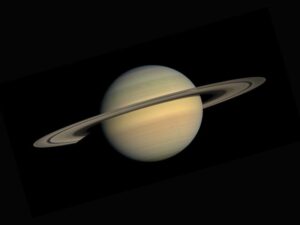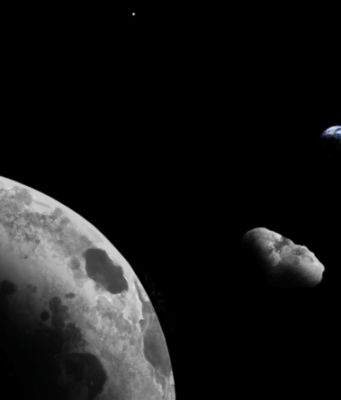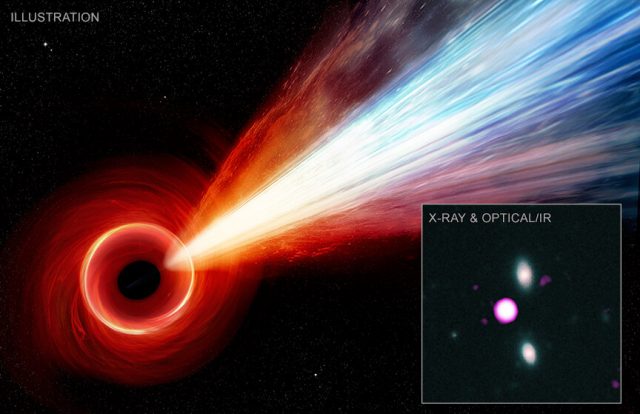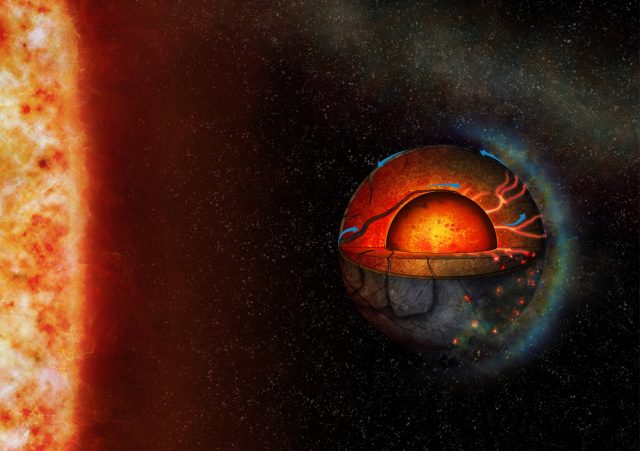When spring arrives in southern Mars, a cloud of water ice emerges near the 20-kilometer-tall Arsia Mons volcano, rapidly stretching out for many hundreds of kilometers before fading away in mere hours. A detailed long-term study now reveals the...
Data from the NASA spacecraft's journey to Jupiter suggests that Mars may be shedding dust into interplanetary space.
Look up to the night sky just before dawn, or after dusk, and you might see a faint column of light extending...
Astronomers have discovered evidence for an extraordinarily long jet of particles coming from a supermassive black hole in the early universe, using NASA's Chandra X-ray Observatory.
If confirmed, it would be the most distant supermassive black hole with a jet...
Determining how rapidly the universe is expanding is key to understanding our cosmic fate, but with more precise data has come a conundrum: Estimates based on measurements within our local universe don't agree with extrapolations from the era shortly...
Astronomers have discovered new hints of a giant, scorching-hot planet orbiting Vega, one of the brightest stars in the night sky.
The research, published this month in The Astrophysical Journal, was led by University of Colorado Boulder student Spencer Hurt, an...
overed and studied in detail the most distant source of radio emission known to date. The source is a "radio-loud" quasar—a bright object with powerful jets emitting at radio wavelengths—that is so far away its light has taken 13...
Comets delivered carbon to rocky planets, and an icy visitor from the edge of our solar system hurtled past Earth in early 2016 to shed the light on that concept. It briefly became visible to stargazers as Comet Catalina...
During the past 25 years astronomers have discovered a wide variety of exoplanets, made of rock, ice and gas, thanks to the construction of astronomical instruments designed specifically for planet searches. Also, using a combination of different observing techniques...
Last year, astronomers were puzzled when Betelguese, the bright red supergiant star in the constellation Orion, dramatically faded, but then recovered. The dimming lasted for weeks. Now, astronomers have turned their sights toward a monster star in the adjoining...
On Earth, plate tectonics is not only responsible for the rise of mountains and earthquakes. It is also an essential part of the cycle that brings material from the planet's interior to the surface and the atmosphere, and then...
About 17 years ago, J. Martin Laming, an astrophysicist at the U.S. Naval Research Laboratory, theorized why the chemical composition of the Sun's tenuous outermost layer differs from that lower down. His theory has recently been validated by combined...
























